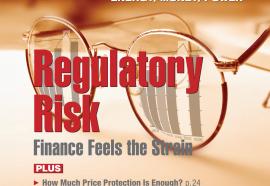Biofuel Furor
Will power plants get caught in ethanol’s food fight?
The debate over food vs. fuel never has been louder. Using corn to make the biofuel ethanol is perhaps the best known point of argument. Everyone is asking: Should the United States require a certain percentage of U.S. corn crops be turned into fuel in the face of global food shortages and exorbitant food prices? And what are the effects of diverting food croplands into producing fuel?









